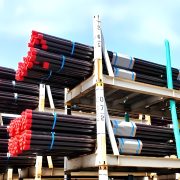13Cr vs Super 13Cr: A Comparative Analysis
In the challenging landscape of the oil and gas industry, material selection is pivotal to ensuring the longevity and efficiency of operations. Among the myriad of materials available, 13Cr and Super 13Cr stainless steels stand out for their remarkable properties and suitability in demanding environments. These materials have revolutionized the industry, providing exceptional resistance to corrosion and robust mechanical performance. Let’s delve into the unique attributes and applications of 13Cr and Super 13Cr stainless steels.
Understanding 13Cr Stainless Steel
13Cr stainless steel, a martensitic alloy containing approximately 13% chromium, has become a staple in the oil and gas sector. Its composition typically includes small amounts of carbon, manganese, silicon, phosphorus, sulfur, and molybdenum, striking a balance between performance and cost.
Critical Properties of 13Cr:
- Corrosion Resistance: 13Cr offers commendable resistance to corrosion, particularly in environments containing CO2. This makes it ideal for use in downhole tubing and casing, where exposure to corrosive elements is expected.
- Mechanical Strength: With moderate mechanical strength, 13Cr provides the necessary durability for various applications.
- Toughness and Hardness: The material exhibits good toughness and hardness, essential for withstanding the mechanical stresses encountered in the drilling and extraction processes.
- Weldability: 13Cr is known for its reasonably good weldability, facilitating its use in various applications without significant complications during fabrication.
Applications in Oil and Gas: 13Cr stainless steel is extensively used in the construction of tubing, casing, and other components exposed to mildly corrosive environments. Its balanced properties make it a reliable choice for ensuring the integrity and efficiency of oil and gas operations.
Introducing Super 13Cr: The Enhanced Alloy
Super 13Cr takes the benefits of 13Cr a step further by incorporating additional alloying elements such as nickel and molybdenum. This enhances properties, making it suitable for more aggressive corrosive environments.
Critical Properties of Super 13Cr:
- Superior Corrosion Resistance: Super 13Cr offers improved corrosion resistance compared to standard 13Cr, particularly in environments containing higher levels of CO2 and the presence of H2S. This makes it an excellent choice for more challenging conditions.
- Higher Mechanical Strength: The alloy boasts higher mechanical strength, ensuring it can withstand more significant stresses and pressures.
- Improved Toughness and Hardness: With better toughness and hardness, Super 13Cr provides enhanced durability and longevity in demanding applications.
- Enhanced Weldability: Super 13Cr’s improved composition results in better weldability, facilitating its use in complex fabrication processes.
Applications in Oil and Gas: Super 13Cr is tailored for use in more aggressive corrosive environments, such as those with higher levels of CO2 and the presence of H2S. Its superior properties are ideal for downhole tubing, casing, and other critical components in challenging oil and gas fields.
Choosing the Right Alloy for Your Needs
The choice between 13Cr and Super 13Cr stainless steels ultimately depends on your oil and gas operations’ specific environmental conditions and performance requirements. While 13Cr provides a cost-effective solution with good corrosion resistance and mechanical properties, Super 13Cr offers enhanced performance for more demanding environments.
Key Considerations:
- Environmental Conditions: Assess the CO2, H2S, and other corrosive elements in the operating environment.
- Performance Requirements: Determine the necessary mechanical strength, toughness, and hardness for the specific application.
- Cost vs. Benefit: Weigh the cost of the material against the benefits of enhanced properties and longer service life.
Conclusion
In the ever-evolving oil and gas industry, selecting materials like 13Cr and Super 13Cr stainless steels is critical to ensuring operations’ reliability, efficiency, and safety. Understanding the unique properties and applications of these alloys allows industry professionals to make informed decisions, ultimately contributing to the success and sustainability of their projects. Whether it’s the balanced performance of 13Cr or the superior attributes of Super 13Cr, these materials continue to play a pivotal role in advancing the capabilities of the oil and gas sector.


